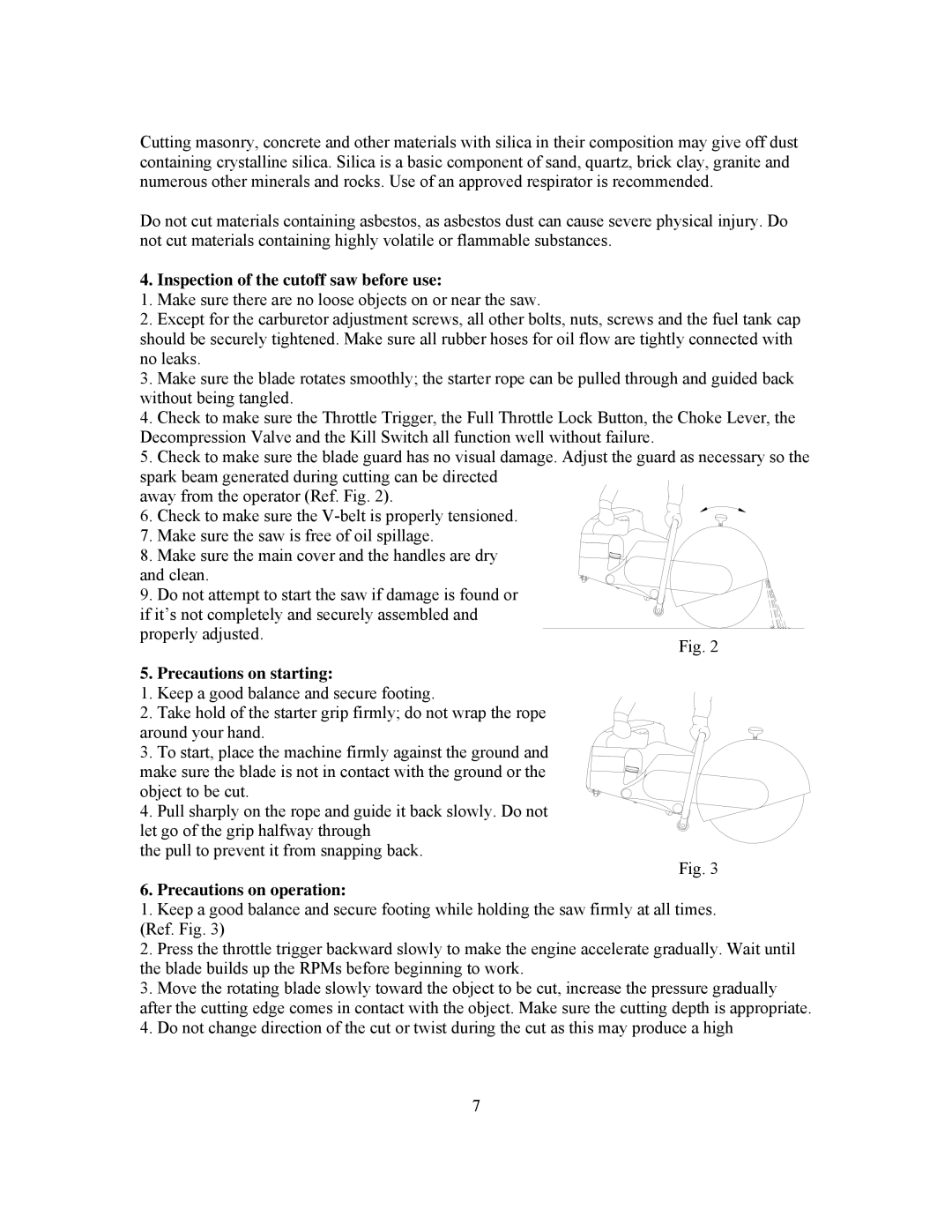
Cutting masonry, concrete and other materials with silica in their composition may give off dust containing crystalline silica. Silica is a basic component of sand, quartz, brick clay, granite and numerous other minerals and rocks. Use of an approved respirator is recommended.
Do not cut materials containing asbestos, as asbestos dust can cause severe physical injury. Do not cut materials containing highly volatile or flammable substances.
4. Inspection of the cutoff saw before use:
1. Make sure there are no loose objects on or near the saw.
2. Except for the carburetor adjustment screws, all other bolts, nuts, screws and the fuel tank cap should be securely tightened. Make sure all rubber hoses for oil flow are tightly connected with no leaks.
3. Make sure the blade rotates smoothly; the starter rope can be pulled through and guided back without being tangled.
4. Check to make sure the Throttle Trigger, the Full Throttle Lock Button, the Choke Lever, the Decompression Valve and the Kill Switch all function well without failure.
5. Check to make sure the blade guard has no visual damage. Adjust the guard as necessary so the spark beam generated during cutting can be directed
away from the operator (Ref. Fig. 2).
6. Check to make sure the V-belt is properly tensioned. 7. Make sure the saw is free of oil spillage.
8. Make sure the main cover and the handles are dry and clean.
9. Do not attempt to start the saw if damage is found or if it’s not completely and securely assembled and properly adjusted.
Fig. 2
5. Precautions on starting:
1. Keep a good balance and secure footing.
2. Take hold of the starter grip firmly; do not wrap the rope
around your hand. 3. To start, place the machine firmly against the ground and
make sure the blade is not in contact with the ground or the object to be cut.
4. Pull sharply on the rope and guide it back slowly. Do not let go of the grip halfway through
the pull to prevent it from snapping back.
Fig. 3
6. Precautions on operation:
1. Keep a good balance and secure footing while holding the saw firmly at all times. (Ref. Fig. 3)
2. Press the throttle trigger backward slowly to make the engine accelerate gradually. Wait until the blade builds up the RPMs before beginning to work.
3. Move the rotating blade slowly toward the object to be cut, increase the pressure gradually after the cutting edge comes in contact with the object. Make sure the cutting depth is appropriate. 4. Do not change direction of the cut or twist during the cut as this may produce a high
7
